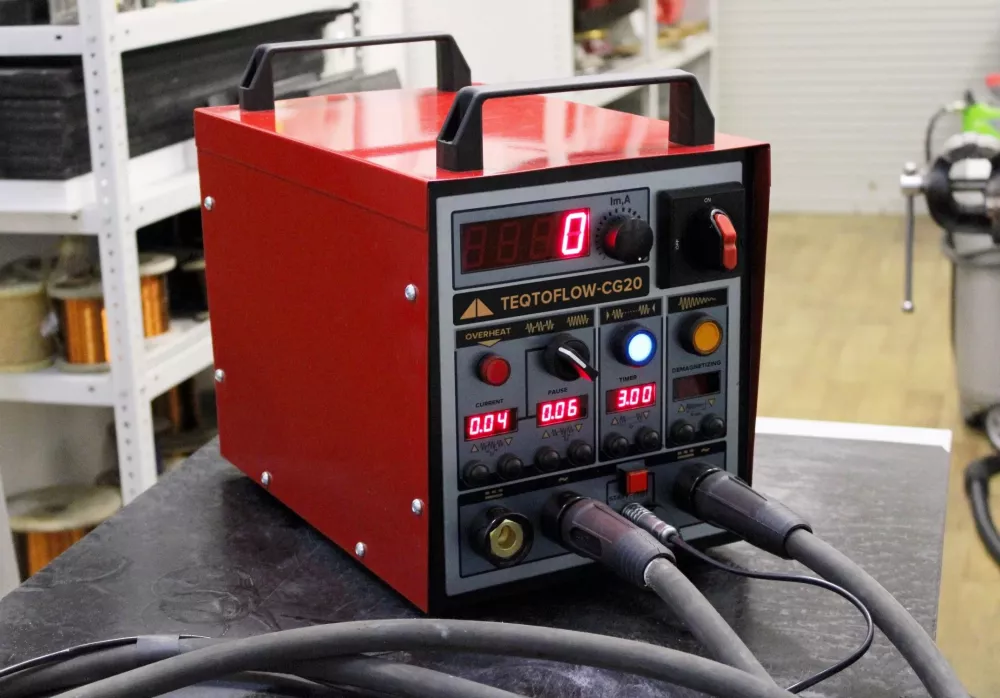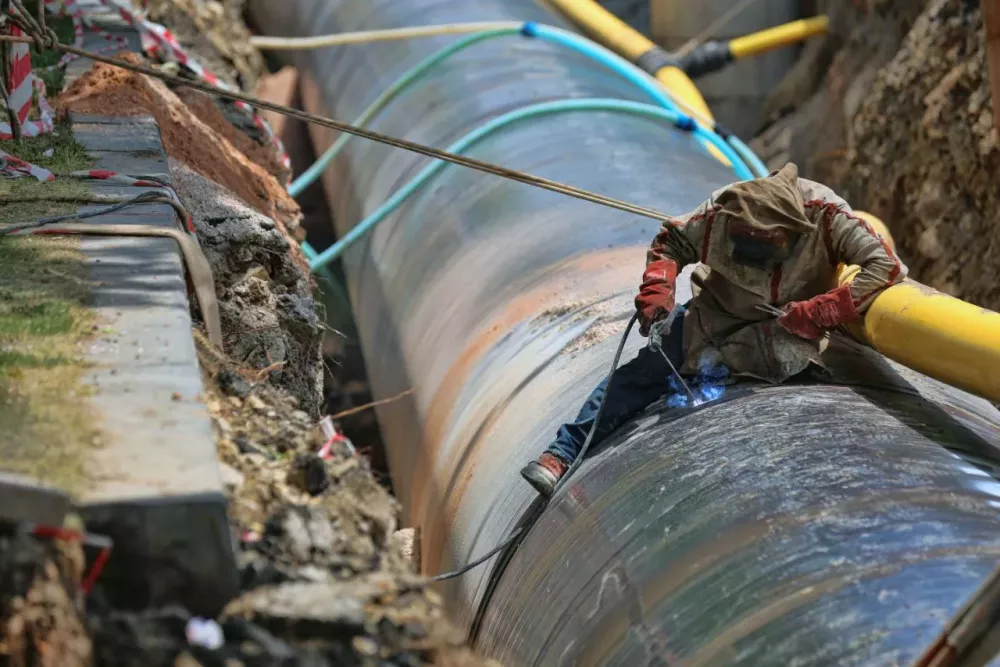
Non-destructive testing (NDT) equipment plays a crucial role in identifying flaws, corrosion, and weaknesses in various industrial applications without causing damage to the tested materials. Portable NDT devices offer flexibility and efficiency in flaw detection processes, making them essential tools in industries like oil and gas, aerospace, transportation, power generation, and automotive.
Inspection with magnetic particle flaw detectors
Magnetic Particle Flaw Detectors are indispensable tools used in non-destructive testing to identify surface and subsurface discontinuities in ferromagnetic materials. These detectors function by inducing a magnetic field into the part and then applying magnetic particles to unveil any flaws. While they are commonly employed in various industries such as power, metallurgy, petrochemical, and machinery, their primary purpose lies in inspecting welds, pressure vessels, and critical components for potential defects.
These detectors come in diverse models equipped with features like AC and DC magnetization, adjustable magnetization, and various power supply options to cater to different inspection requirements. Over recent years, the utilisation of magnetic particle flaw detection has surged, emerging as a vital method to complement visual examination in numerous areas of in-service inspection across various plant types.
Magnetic Particle Flaw Detectors excel in detecting surface and near-surface flaws in ferromagnetic materials like ferritic steels and irons, although they are generally unsuitable for austenitic steels. By establishing a magnetic field and administering magnetic particles, these detectors can unveil defects such as cracks and discontinuities that may compromise the structural integrity of components.
During the inspection process, the specimen is magnetised either locally or overall. In instances where the material is intact, the magnetic flux predominantly resides within the material. However, if a surface-breaking flaw is present, the magnetic field undergoes distortion, leading to local magnetic flux leakage around the flaw. This leakage flux subsequently attracts iron particles, which are applied either dry or suspended in a liquid medium (magnetic ink). These particles gather at the sites of flux leakage, forming a visible accumulation that can be observed visually, even when the crack opening is extremely narrow.
The method entails the application of iron particles onto the surface of the material under inspection. These particles are drawn towards areas exhibiting magnetic flux leakage, indicative of flaws in the material. By coating the surface with fine iron particles, inspectors can visually identify indications of cracks and discontinuities, thereby facilitating the detection and assessment of potential defects.
In essence, Magnetic Particle Flaw Detectors play a crucial role in enhancing inspection accuracy by enabling the detection of flaws that may otherwise remain hidden. With their ability to reveal both surface and subsurface discontinuities, these detectors contribute significantly to ensuring the integrity and reliability of critical components across various industries.
TEQTO’s answer to magnetic particle flaw detectors: Teqtoflow series
Teqtoflow-CG20 portable magnetic particle flaw detector is designed to detect surface and subsurface defects when testing products made of ferromagnetic materials. Incomplete fusion, cracks, and flocks can be identified.
Eddy-current flaw detectors
Eddy-Current Flaw Detectors are cutting-edge instruments that leverage electromagnetic induction to identify flaws in conductive materials. Renowned for their effectiveness in detecting surface cracks, corrosion, and material inconsistencies, these detectors offer versatile solutions for a myriad of applications across industries such as aerospace, automotive, and manufacturing.
The operation of Eddy-Current Flaw Detectors revolves around the generation of magnetic fields, which induce electrical currents in the material under inspection. These induced currents, known as eddy currents, interact with the material's properties and any defects present, resulting in alterations in electrical conductivity. By meticulously measuring these conductivity changes, the detector can pinpoint flaws such as surface cracks, bolt hole cracks, second and third layer cracks, as well as corrosion, with remarkable accuracy.
One exemplary instrument in this domain is the ED-45 – Eddy-current flaw detector. Engineered specifically for flaw detection, this handheld device excels in detecting cracks and measuring their depth, particularly adept at identifying stress-corrosive cracks within ferromagnetic metal constructions, even beneath layers of corrosion or protective coating.
The ED-45 boasts a unique feature that facilitates the measurement of corrosive damage depth and protective coating thickness, merging magnetic and eddy-current methods for flaw detection. This distinctive capability enables users to inspect products with rough corroded surfaces and measure through varying thicknesses of insulating coating without necessitating additional readjustment.
The applications of the ED-45 extend across a wide spectrum of industries and include:
- Pipes and pipelines
- Oil and gas pipelines
- Vessels and pressure vessels
- Energy production objects
- Structural details, machinery, and mechanisms
Operational advantages of the ED-45 are manifold, including the simultaneous identification and depth measurement of stress corrosion cracks and thickness of insulating coating, continuous monitoring of insulating coating thickness to detect corrosion fissures, and real-time adjustment of readings. Its intuitive interface ensures ease of use, while construction advantages such as the capability to use additional changeable sensors, metallic housing of electronic units for reliable performance in severe field conditions, and sensors with abrasion-resistant zirconium ceramics contact surface enhance its durability and functionality.
The Eddy-current flaw detector ED-45 is engineered for use in both industrial and field conditions, excelling in environments featuring coarse and corroded surfaces, damp and dirty surfaces, and surfaces with variable thicknesses of insulating coating. With its unparalleled capabilities, the ED-45 stands as a testament to the advancements in flaw detection technology, providing unparalleled insights into the integrity of critical components across diverse applications.
Unveiling material defects with acoustic flaw detectors
Acoustic Flaw Detectors, also referred to as Ultrasonic Flaw Detectors, harness the power of high-frequency sound waves to scrutinise materials for internal defects. These waves traverse through the material and bounce back upon encountering internal irregularities such as voids, cracks, delaminations, or inclusions. Through meticulous analysis of these reflected waves, the detector can discern the location, size, and characteristics of flaws embedded within the material.
These detectors exhibit remarkable sensitivity, capable of identifying flaws like voids, cracks, and delaminations across a broad spectrum of materials, including metals, plastics, ceramics, and composites. Their inherent portability renders them invaluable for on-site inspections and maintenance undertakings in industries spanning aerospace, manufacturing, construction, and structural inspections, thereby ensuring the integrity and safety of critical components.
One standout instrument in this domain is the TQ-92 – Acoustic flaw detector. Tailored explicitly for flaw detection, this handheld device facilitates the detection of delaminations and other material defects through manual scanning of the inspection area. Its applications encompass non-destructive testing of bonded or laminated components employing Mechanical Impedance Analysis (MIA). The instrument finds utility in testing multilayered laminates, fibre-laminate materials, laminate-honeycomb bonding, laminate-metal bonding, metal-metal bonding, metal soldering, metal-felt metal brazing, hard and soft foams, as well as wood laminates.
Operational advantages of the TQ-92 include high detection capability and spatial resolution within an inspection range from 0.15 mm to 13 mm, an extra-light and compact electronic unit for comfortable fieldwork, dry coupling of the sensor eliminating the need for coupling liquid, and stable and reliable indications ensured by the constant pressure of the spring-loaded sensor. Additionally, its construction advantages encompass rapid start with minimal training required for new operators, easy calibration facilitated by automatic sensor calibration on the inspection object, stable and reliable operation on rough/uneven surfaces due to the spring-loaded sensor design, and availability of custom sensor design for specific material combinations.
The TQ-92 also accounts for various sources of material defects, including impact damages by foreign objects, hail and lightning strikes, loss of strength caused by heat, thickness variations, and osmosis damages of fibreglass boats. By integrating cutting-edge technology with user-friendly design and robust construction, the TQ-92 stands as a beacon of excellence in the realm of acoustic flaw detection, enabling precise identification and characterisation of material defects to uphold the highest standards of safety and reliability in diverse industrial applications.
In conclusion, the use of portable NDT equipment like Magnetic Particle Flaw Detectors, Eddy-Current Flaw Detectors, and Acoustic Flaw Detectors is essential for maintaining the structural integrity of industrial components while minimising downtime and costs. These advanced tools offer a reliable means of flaw detection across a wide range of materials and industries. By combining the capabilities of these portable devices with skilled technicians trained in non-destructive testing techniques, industries can enhance safety standards, improve operational efficiency, and prolong the lifespan of critical assets.


